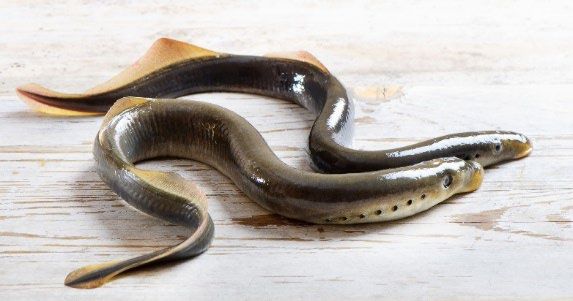2024年美赛A题:资源可用性和性别比例 Resource Availability and Sex Ratios 思路模型代码解析
2024年美赛A题:资源可用性和性别比例 Resource Availability and Sex Ratios 思路模型代码解析
【点击最下方群名片,加入群聊,获取更多思路与代码哦~】
问题翻译

虽然一些动物物种存在于通常的雄性或雌性之外,但大多数物种在很大程度上要么是雄性,要么是雌性。虽然许多物种在出生时表现出1:1的性别比例,但其他物种偏离了均等的性别比例。这被称为适应性性别比例变异。例如,孵化美洲鳄鱼蛋的巢的温度会影响出生时的性别比例。
七鳃鳗的作用是复杂的。在一些湖泊栖息地中,它们被视为对生态系统有重大影响的寄生虫,而在世界某些地区,如斯堪的纳维亚、波罗的海地区以及北美太平洋西北部的一些土著民族中,七鳃鳗也是一种食物来源。
海洋七鳃鳗的性别比例可以根据外部环境而变化。海洋七鳃鳗在幼虫阶段的成长速度决定其成为雄性还是雌性。这些幼虫的生长速率受到食物供应的影响。在食物供应较低的环境中,生长速率将较低,雄性的比例可以达到约78%的总体人口。在食物更容易获得的环境中,雄性的比例观察到约为总体人口的56%。
我们重点关注性别比例及其对当地条件的依赖的问题,特别是对于海洋七鳃鳗。海洋七鳃鳗生活在湖泊或海洋栖息地,并迁徙到河流上游产卵。任务是审视物种根据资源供应情况调整其性别比例的能力的优势和劣势。您的团队应该开发并审查一个模型,以便深入了解生态系统中产生的相互作用。
要完成的问题包括以下内容:
- 当七鳃鳗种群能够改变其性别比例时,对更大的生态系统有什么影响?
- 对七鳃鳗种群来说,有哪些优点和缺点?
- 随着七鳃鳗性别比例的变化,对生态系统稳定性有何影响?
- 在七鳃鳗种群的性别比例变化的情况下,生态系统是否能够为其他生物提供优势,比如寄生虫?
思路解析
问题一:改变七鳃鳗种群性别比例时,对的生态系统的影响
本题要求考虑当七鳃鳗种群能够改变其性别比例时,对更大的生态系统的影响。我们可以采用生态学模型来模拟这种影响。首先,我们需要考虑七鳃鳗种群的性别比例对其捕食和被捕食者的影响,以及它们的繁殖率和生存率如何影响其他生物种群的数量和分布。然后,我们可以使用这些模拟结果来评估七鳃鳗性别比例变化对整个生态系统稳定性的影响。
解题模型:
- 建立生态模型:首先,需要建立一个生态模型,考虑到七鳃鳗作为食物链中的一环,其性别比例变化可能会对其他物种产生影响。你可以选择使用**Agent-Based Modeling(基于代理的建模)或Compartmental Models(区域模型)**等方法。基于代理的建模会考虑到个体之间的相互作用和行为,而区域模型则会将生态系统划分为不同的区域,考虑其之间的相互影响。
- 定义模型参数:确定模型中的关键参数,例如七鳃鳗的种群大小、性别比例、繁殖率,以及其他物种的种群大小、食物链关系等。这些参数将影响模型的稳定性和结果。
- 模拟性别比例变化:编写模拟程序,模拟七鳃鳗种群性别比例的变化。考虑到七鳃鳗的性别比例变化可能受到环境因素和资源可用性的影响,可以在模拟中引入这些因素。
- 评估影响:通过模拟结果,评估七鳃鳗性别比例变化对生态系统的影响。这可能涉及到其他物种的种群动态、食物链关系、生态系统的稳定性等方面的变化。
- 探讨结果:根据评估结果**,探讨七鳃鳗性别比例变化对生态系统的影响**。分析其可能的优势和劣势,以及对生态系统稳定性的影响,以及是否会对其他生物种群产生积极或消极影响。
- 验证和调整模型:根据探讨的结果,验证模型的准确性,并根据需要进行调整和改进。这可能涉及到调整模型参数、引入更复杂的因素或者改进模拟方法等。
示例代码:
import random
class Lamprey:
def __init__(self, sex):
self.sex = sex
class Ecosystem:
def __init__(self, lampreys):
self.lampreys = lampreys
def update_lamprey_sex_ratio(self, new_sex_ratio):
for lamprey in self.lampreys:
if random.random() < new_sex_ratio:
lamprey.sex = "male"
else:
lamprey.sex = "female"
def simulate_ecosystem(self, iterations):
for i in range(iterations):
# 模拟七鳃鳗性别比例变化
self.update_lamprey_sex_ratio(0.5) # 七鳃鳗性别比例变为50:50
# 进行其他生态系统更新步骤,例如捕食和繁殖
# ...
lampreys = [Lamprey(random.choice(["male", "female"])) for _ in range(1000)]
ecosystem = Ecosystem(lampreys)
ecosystem.simulate_ecosystem(100)
问题二:七鳃鳗种群性别比例变化对其自身的优劣势
- 确定优势和劣势指标:
- 确定评估七鳃鳗种群性别比例变化的优劣势的具体指标。这些指标可能包括:
- 繁殖成功率:性别比例的变化可能影响七鳃鳗的繁殖成功率,进而影响种群的增长。
- 遗传多样性:保持适当的性别比例可能有助于维持种群的遗传多样性,提高其对环境变化的适应能力。
- 竞争优势:某些性别比例可能导致个体之间的竞争更加激烈,影响其生存和繁殖成功率。
- 种群稳定性:性别比例变化可能对种群的稳定性产生影响,例如增加种群的易感性和脆弱性。
- 确定评估七鳃鳗种群性别比例变化的优劣势的具体指标。这些指标可能包括:
- 建立模型框架:
- 设计一个能够模拟七鳃鳗种群动态的模型,包括个体的生存、繁殖和竞争等过程。
- 在模型中引入性别比例变化的参数,并考虑其对个体行为和种群动态的影响。
- 模拟性别比例变化:
- 使用建立的模型,模拟七鳃鳗种群性别比例的变化。可以考虑不同的性别比例变化方案,如逐渐增加或减少某一性别的比例,或者随机性地变化性别比例。
- 模拟过程中可以考虑外部环境因素对性别比例变化的影响,如食物资源的变化、环境污染等。
- 评估优劣势:
- 分析模拟结果,评估不同性别比例变化方案下七鳃鳗种群的繁殖成功率、遗传多样性、竞争优势和种群稳定性等指标。
- 比较不同方案下的优劣势,分析性别比例变化对种群自身的影响。
- 解释和讨论结果:
- 根据评估结果,解释不同性别比例变化方案下七鳃鳗种群的优劣势。
- 讨论性别比例变化对七鳃鳗种群稳定性、适应性和长期生存的影响,以及可能的生态学意义和管理建议。
import random
class Lamprey:
def __init__(self, sex):
self.sex = sex
class Population:
def __init__(self, size, initial_sex_ratio):
self.size = size
self.individuals = [Lamprey(random.choice(["male", "female"])) for _ in range(size)]
self.sex_ratio = initial_sex_ratio
def update_sex_ratio(self, new_sex_ratio):
self.sex_ratio = new_sex_ratio
def evaluate_reproductive_success(self):
# 简单假设:性别比例对繁殖成功率的影响
reproductive_success = self.sex_ratio * 0.5 # 七鳃鳗性别比例越接近50:50,繁殖成功率越高
return reproductive_success
lamprey_population = Population(1000, 0.5) # 初始种群大小为1000,性别比例为50:50
lamprey_population.update_sex_ratio(0.6) # 更新性别比例为60%雄性
reproductive_success = lamprey_population.evaluate_reproductive_success()
print("Reproductive success:", reproductive_success)
问题三:七鳃鳗种群性别比例变化对生态系统稳定性的影响
- 确定生态系统稳定性指标:
- 确定用于评估生态系统稳定性的具体指标,例如物种多样性指数、种群数量稳定性、食物链关系稳定性等。这些指标将用于量化生态系统的稳定性水平。
- 建立生态系统模型:
- 基于现有的生态学理论和实证研究,建立一个能够模拟七鳃鳗与其生态系统相互作用的模型。这个模型应该考虑到七鳃鳗在食物链中的角色、其捕食行为、繁殖行为以及对其他物种种群动态的影响。
- 可以选择合适的建模方法,例如Agent-Based Modeling(基于代理的建模)、Compartmental Models(区域模型)等,以便准确地描述七鳃鳗种群与其生态环境的交互作用。
- 模拟性别比例变化:
- 在建立的生态系统模型中引入性别比例变化的机制,并模拟不同性别比例变化方案下的生态系统动态。这可以通过设定性别比例变化的规则、外部因素的影响或个体的行为来实现。
- 考虑到七鳃鳗种群性别比例变化可能受到环境因素(如温度、食物资源)和个体行为(如竞争、繁殖策略)的影响,模拟过程中需要综合考虑这些因素。
- 评估生态系统稳定性:
- 分析模拟结果,评估不同性别比例变化方案对生态系统稳定性的影响。可以使用建立的稳定性指标来量化生态系统的稳定性水平,并比较不同方案下的变化趋势。
- 考虑到模型的不确定性和假设条件,可以进行敏感性分析,评估不同参数设定和模型假设对结果的影响。
- 解释和讨论结果:
- 根据评估结果,解释不同性别比例变化方案对生态系统稳定性的影响,并探讨可能的机制和原因。
- 讨论性别比例变化对生态系统稳定性的重要性,并考虑其对生态系统功能和服务的潜在影响。
参考代码:
class Lamprey:
def __init__(self, sex):
self.sex = sex
self.alive = True
class Ecosystem:
def __init__(self, lampreys, prey_population):
self.lampreys = lampreys
self.prey_population = prey_population
def simulate_ecosystem(self, iterations):
for i in range(iterations):
# 模拟七鳃鳗性别比例变化
self.update_lamprey_sex_ratio()
# 进行其他生态系统更新步骤,例如捕食和繁殖
self.update_prey_population()
# 分析生态系统稳定性指标
self.analyze_ecosystem_stability()
def update_lamprey_sex_ratio(self):
# 根据性别比例变化规则更新七鳃鳗性别比例
pass
def update_prey_population(self):
# 更新捕食物种群的数量
pass
def analyze_ecosystem_stability(self):
# 分析生态系统的稳定性指标,如物种多样性、种群数量稳定性等
pass
lampreys = [Lamprey("male") for _ in range(500)] + [Lamprey("female") for _ in range(500)]
prey_population = 1000 # 假设捕食物种群的初始数量
ecosystem = Ecosystem(lampreys, prey_population)
ecosystem.simulate_ecosystem(100)
问题四:七鳃鳗种群性别比例变化对生态系统中其他物种(如寄生虫等)的影响
- 确定其他物种的影响指标:
- 确定要评估其他物种(如寄生虫)受七鳃鳗性别比例变化影响的具体指标。这些指标可能包括寄生虫的数量、寄生率、寄生虫种群动态(如增长速率、迁徙模式等)等。
- 收集相关数据和文献:
- 收集关于七鳃鳗与其他物种(如寄生虫)相互作用的相关数据和文献。这些数据可以用于建立模型和验证模拟结果。
- 建立生态系统模型:
- 基于现有的生态学理论和实证研究,建立一个能够模拟七鳃鳗与其他物种相互作用的生态系统模型。这个模型应该考虑到七鳃鳗对其他物种的捕食行为、影响其种群数量和分布的因素等。
- 可以选择合适的建模方法,如Agent-Based Modeling或Compartmental Models等。
- 模拟七鳃鳗性别比例变化:
- 在生态系统模型中引入七鳃鳗性别比例变化的机制,并模拟不同性别比例变化方案下的生态系统动态。这可以通过设定性别比例变化的规则、外部因素的影响或个体的行为来实现。
- 考虑到七鳃鳗性别比例变化可能影响其捕食行为、生存率和种群数量,模拟过程中需要综合考虑这些因素。
- 评估其他物种的影响:
- 分析模拟结果,评估七鳃鳗性别比例变化对其他物种(如寄生虫)的影响。使用收集的数据和文献作为基准,验证模拟结果的准确性和合理性。
- 评估其他物种的影响可以通过比较不同性别比例变化方案下的变化趋势来实现,分析其对其他物种数量、分布和生态功能的影响程度。
- 解释和讨论结果:
- 根据评估结果,解释七鳃鳗性别比例变化对其他物种的影响,并探讨可能的机制和原因。考虑七鳃鳗在食物链中的位置和对其他物种的生态功能的影响。
- 讨论七鳃鳗性别比例变化对生态系统稳定性和功能的影响,以及可能的管理和保护策略。
参考代码:
class Lamprey:
def __init__(self, sex):
self.sex = sex
class Parasite:
def __init__(self, population):
self.population = population
class Ecosystem:
def __init__(self, lampreys, parasites):
self.lampreys = lampreys
self.parasites = parasites
def simulate_ecosystem(self, iterations):
for i in range(iterations):
# 模拟七鳃鳗性别比例变化
self.update_lamprey_sex_ratio()
# 模拟寄生虫种群动态
self.update_parasite_population()
# 分析寄生虫受影响程度
self.analyze_parasite_impact()
def update_lamprey_sex_ratio(self):
# 根据性别比例变化规则更新七鳃鳗性别比例
pass
def update_parasite_population(self):
# 模拟寄生虫种群动态,考虑七鳃鳗的捕食行为对寄生虫种群数量的影响
pass
def analyze_parasite_impact(self):
# 分析七鳃鳗性别比例变化对寄生虫种群的影响
pass
lampreys = [Lamprey("male") for _ in range(500)] + [Lamprey("female") for _ in range(500)]
parasites = Parasite(1000) # 假设寄生虫种群的初始数量
ecosystem = Ecosystem(lampreys, parasites)
ecosystem.simulate_ecosystem(100)
【点击下方群名片,加入群聊,获取更多思路与代码哦~】